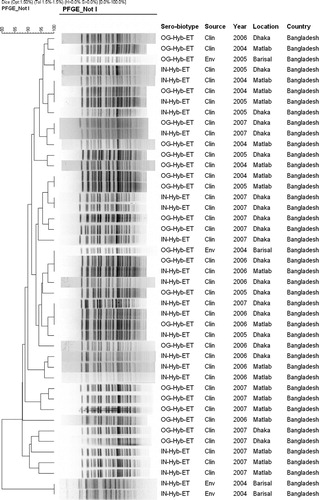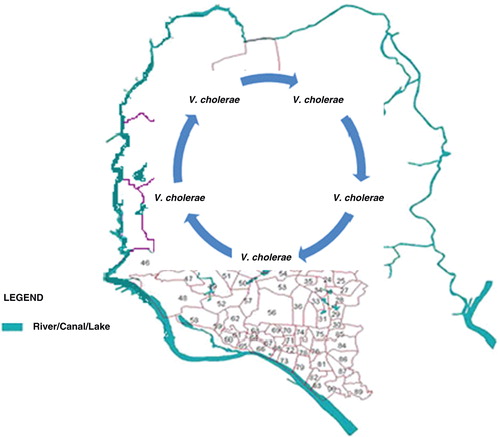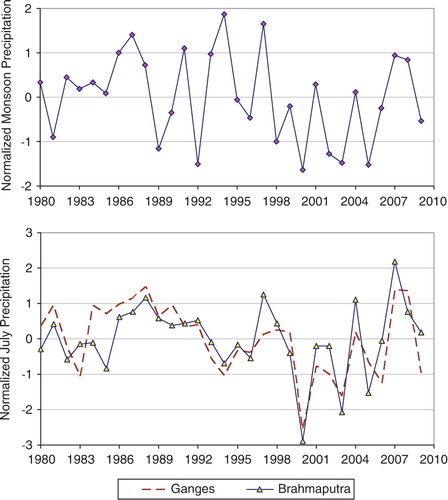Figures & data
Fig. 1. Molecular fingerprinting analysis using pulsed-field gel electrophoresis (PFGE) of NotI-digested genomic DNA obtained from V. cholerae serogroup O1 biotype El Tor strains isolated during the peak of the Dhaka epidemic, 2007, and pre-existing V. cholerae hybrid El Tor strains isolated between 2004 and 2007 in Dhaka and Matlab, two inland (freshwater) cholera endemic sites located 50 km apart and Barisal, a cholera endemic coastal ecosystem of Bangladesh. The dendrogram was constructed using digital images of PFGE patterns and Dice similarity coefficient and UPGMA clustering methods.

Fig. 2. Comparative yearly data showing weekly admissions of diarrheal patients to the ICDDR,B hospital in Dhaka (2006–2008) during the unusual flood-related diarrheal epidemic that broke out in August 2007. The graph shows number of cases per week, based on actual numbers of diarrheal patients admitted to the ICDDR,B hospital. Number of cases for 2008 are included up to the third week of August.

Table 1. Phenotypic and molecular characteristics of Vibrio cholerae Ol strains isolated during the flood-related Dhaka epidemic in 2007 and V. cholerae O1 strains isolated between 2004 and 2007 in Dhaka and Matlab. V. cholerae O1 classical and El Tor strains were included as controls
Fig. 3. Map of Dhaka city showing the circular river systems along its border that receive the sewage effluent of nearly 15 million inhabitants. The city has an extensive, but not fully effective, sewage network linked to ponds, lakes, and canals that flow into the surrounding river systems. The circular arrows at the center indicate clonal recycling of V. cholerae in Dhaka, a fresh-water ecosystem situated 250 km distant from the estuarine ecosystem of the Bay of Bengal, Bangladesh. Unlike the estuarine ecosystem, where V. cholerae comprises a portion of the autochthonous microflora (12) in association with plankton year round (13,14), the water bodies of Dhaka serve as a constant source of highly transmissible V. cholerae. During extreme climatic conditions such as flooding in the poor urban setting of Dhaka, fecal-oral transmission is enhanced leading to significant off-season outbreaks, as occurred during flooding in 2007 in Dhaka. Flooding churns the waters, bringing sediment and V. cholerae biofilm attached to particulates into the surface water, thereby enriching the V. cholerae population.

Fig. 4. (A) Climatological analysis of Bangladesh monsoon precipitation for 1980–2009 shows the relative magnitude of combined monsoon (JJAS: June–September) rainfall in 2007. The normalized anomaly values indicate 2007 was not a record year. (B) However, anomaly analysis of monthly rainfall shows that July 2007 was the highest monthly amount (for July) recorded for the Brahmaputra catchment areas in 30 years. In addition, the Ganges catchment areas also experienced very heavy rainfall in July 2007, as shown by the anomaly calculated against the 30 year base period (1980–2009).
